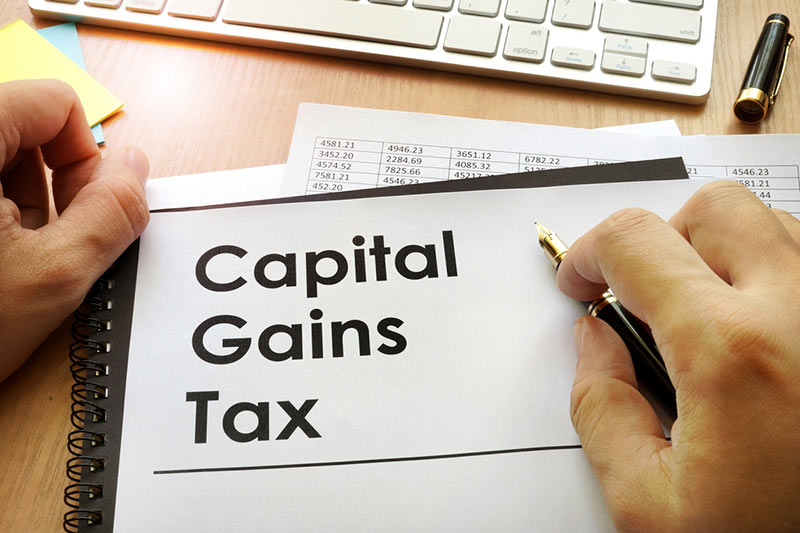
This is the final article of our three-part series on planning for the increased capital gains tax.
Our first article outlined the upcoming changes to the capital gains tax and considered if you should pay that tax now or defer it into the future. In the second article, we reviewed whether or not it could be beneficial to trigger gains to access tax-free capital dividends from the company’s capital dividend account.
Lastly, let’s review how the proposed changes may affect your decisions on capital gains tax associated with your real estate holdings.
Pay now or pay later?
As we outlined in part one, if you’re going to be retaining the real estate holdings for the long-term, perhaps five years or more, you likely don’t want to be paying any additional tax at this time and would rather defer that tax into the future. However, if the property is going to be sold in the next couple of years, it is attractive to pay 25% tax now rather than 34% in the next few years.
How much to pay?
It is simple with your stock portfolio, where you can simply choose to sell as many or as few stocks as you desire and realize as small or as large of a capital gain as you desire. You can then simply repurchase those stocks.
With your real estate holdings, it’s a little more complicated to trigger the capital gain before the tax rates change on June 25th.
The T2057 Section 85 tax election
In order to trigger the capital gain on real estate you will have to sell the property to a related party or another related company. Our comments will assume your real estate holdings are already being held in a company.
The T2057 tax election allows you to transfer the property at anywhere between cost and fair market value, allowing you to select the amount of capital gain that you wish to realize.
The deadline to submit the T2057 tax election to the CRA is the earlier of the tax deadlines of the two parties involved in the transaction. As an example, if your company has a June fiscal year-end, the deadline to submit the tax election is December 31, 2024. On the other hand, if your company has a May 31st fiscal year-end and you implement the transaction in June 2024, the tax election doesn’t have to be filed with the CRA until November 30, 2025.
As a result, if you’re unsure of the value of the property, the ultimate sale price, or the amount of tax you want to pay, you have until at least December 31, 2024 and at the latest November 30, 2025, depending on your fiscal year-end, to determine the amount of capital gain you would like to report.
An outline of the transaction is as follows:
- Incorporate a new company (“Newco”)
- The existing company (“Holdco”) will sell the property to Newco for its fair market value prior to June 25th.
- In consideration, Newco will issue shares to Holdco.
- Newco and Holdco will jointly elect on the T2057 Section 85 election for the transfer to take place at anywhere between the cost and the fair market value.
Property transfer tax
In B.C., property transfer tax applies when there is a change in the legal owner of the property. The property transfer tax is payable by the purchaser. To avoid the property transfer tax, Holdco and Newco will enter into a bare trust or nominee agreement which will state that Holdco will remain on the legal title and Newco will become the beneficial owner of the property. As a result, the property transfer tax will not be payable until the property is ultimately sold to a third party.
GST
You also have to plan for the GST. Used residential property is generally exempt from GST. Commercial property is subject to GST. However, if Newco is a GST registrant, GST will not apply to a transaction involving commercial property. Newco will need to collect and remit GST to the CRA on any commercial rental income collected from the date of acquisition until the date the property is ultimately sold to a third party.
Recaptured depreciation
Generally, when you sell a property for more than its original cost the sale proceeds in excess of the cost will be taxed as a capital gain. However, a portion of the sale proceeds is attributed to the land, and a portion is attributed to the building. Land is not depreciable property, but the building is. You’ve likely claimed depreciation on the building, referred to as capital cost allowance or CCA for income tax purposes. If the sale proceeds attributed to the building are greater than the depreciated cost of the building, the excess up to the original cost of the building is taxable as recaptured depreciation and not a capital gain. While only 50% of the capital gain is included in income, recaptured depreciation is fully taxable.
If the property was used in your practice the recaptured depreciation may be taxed at your regular practice tax rate of either 11% or 27% depending on your level of income. However, if the property has not been used in your practice and is being rented to an unrelated party, the income tax on the recaptured depreciation can be as high as 50%.
These are complex tax estimates that will need to be calculated by your accountant.
Anti-flipping rule
Be careful of the anti-flipping rule. The anti-flipping rule only applies to residential property and not commercial property. The anti-flipping rule applies if you sell or transfer the property and owned the property for less than 12 months. If the anti-flipping rule applies, the gain on the sale of the property is fully taxed as income and not as a capital gain. As a result, for residential property, you need to be certain of the following:
- the property was owned for at least 12 months before transferring it to Newco
- if Newco sells the property within 12 months of the transfer, you must elect at the full sale price on the T2057 tax election or as close as possible to the estimated sale price if the ultimate sale price is not known at the time of filing on the T2057 tax election
- if you are only going to elect to pay tax on a portion of the gain on the transfer to Newco, Newco must hold the property for at least 12 months before it is ultimately sold to a third party in order for the remaining profit to be treated as a capital gain
Let’s look at a couple of examples:
Doug and Bob are both physicians and meet regularly for Wednesday morning breakfast before they start their busy practices. Doug is going to retire in the next two years and owns his own clinic real estate in his holding company. Bob has several years ahead of him and owns a residential rental property in his holding company.
The tenants in Bob’s rental property have been challenging and the property is getting older. It won’t be long before the roof needs to be replaced. In light of the increase in capital gains tax, Bob listed the rental property for sale immediately after the budget was released. However, Bob is concerned there is no way he can get a deal closed before the tax rates change on June 25th.
Bob’s rental property is listed for $900,000. He purchased it many years ago for $500,000. Bob knows that the ultimate sale of the property is going to cause the passive income grind (as discussed in part two), but that can’t be avoided, it’s time for him to divest himself of his real estate holdings. Although he’s going to experience the passive income grind, access to the company’s capital dividend account will help alleviate that tax burden. However, Bob’s anxious about paying 34% capital gains tax rather than 25% on the $400,000 capital gain, which will be an extra $36,000 of tax. Bob called his accountant hoping they could help.
Bob’s accountant explains he can transfer the property to a new company prior to June 25th to trigger the capital gain. Bob’s accountant knows that he can’t pinpoint the ultimate sale price so he will rely on the Section 85 election to limit the amount of capital gain. Bob’s accountant lays out the steps as follows:
- Incorporate Newco
- On June 24th Holdco will sell the property to Newco for $900,000.
- In consideration for the sale of the property, Newco will issue shares to Holdco.
- Newco and Holdco will enter into a bare trust agreement stating that Holdco will remain on legal title to avoid the property transfer tax.
- Newco and Holdco will jointly elect on the T2057 section 85 election for the transfer of the property to take place at anywhere between the cost of the property of $500,000 and the fair market value of $900,000.
Bob’s holding company has a December year-end. The deadline for submitting the T2057 tax election is June 30, 2025. Bob’s accountant explains that if later this summer the property finally gets an accepted offer and ultimately sells for $850,000, the T2057 tax election will be filed electing the transfer to take place at $850,000 rather than $900,000 so that Bob’s holding company only pays capital gains tax based on $850,000 rather than the original estimated value of $900,000.
If Bob really struggles to sell the property because interest rates remain high and he doesn’t want to decrease the sale price and instead decides to keep the property, he can always elect in June 2025 for the transfer of the property from Holdco to Newco to take place at tax cost and no tax will be payable on the transaction. Bob would’ve only incurred some accounting and legal fees as a form of insurance to ensure that he had access to lower tax rates. If he does change his mind, Newco will need to own the property for at least 12 months before selling it to avoid the anti-flipping rule.
Bob outlines the transaction to Doug at breakfast that morning. Doug is excited at the possibility that he too may be able to pay the tax on his practice real estate now rather than in the next two years at the higher rate. Doug calls his accountant and is delighted to hear that he can perform the same transaction on his practice real estate and pay the 25% tax rather than the 34% tax. Doug can pick the amount of tax he wishes to pay by filing the tax election as he ultimately doesn’t know what the property will sell for two years from now and as result will elect at a lower value to ensure that he is not overpaying the tax at this time.
Doug is even more excited to hear from his accountant that the gain on the real estate will not grind down his small business tax rate because it is not considered a passive asset as it is actively used in his medical practice.
Conclusion
That wraps up our three-part series on planning for the increase in capital gains tax. As you can appreciate, there are a lot of moving parts and a lot of complexity in whether or not it makes sense to pay any tax now or defer the tax to the future.
As outlined in our first article, no one can predict the future and it’s difficult to know what the tax rules may be a few years down the road. Also, keep in mind the capital gains tax rate change is not yet law. If you’re going to execute any pre-emptive planning, consider waiting until closer to the deadline when there is more certainty there aren’t going to be additional changes.
If you’re uncertain how these rules may apply to your circumstances, give us a call.



